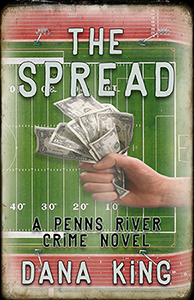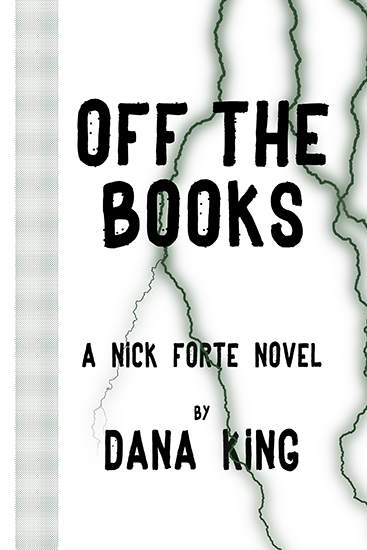I had a nice intro for Ed “E.A.” Aymar all set to go until
the Legal Department saw what I’d written and pimples spelling “LIBEL” burst
out on their foreheads. “But it’s all true,” I said. “You still can’t afford
the lawsuit,” they said. “All you have is your job and that litigious bastard
has the bottomless pockets of [employer name redacted]. He’ll bankrupt you.”
Okay.
So, E.A. Aymar is an author, raconteur, bon vivant,
entrepreneur, media genius, and the country’s leading provider of dick jokes.
His new book, The
Unrepentant, is blowing up, and his treatment of a delicate issue is
earning well-deserved kudos from all points. Ed also writes a column for the
Washington Independent Review of Books, serves on the board of the International
Thriller Writers while managing “The Thrill Begins” for ITW and acting as the
Vice-President for Author Programs. He also organizes Washington DC-area Noirs
at the Bar, where his penchant for awarding deadly weapons to the fan favorites
had brought him wide-ranging attention, notably within the Metropolitan Police
Department.
One Bite at a Time:
Tell us a little about The Unrepentant.
E.A. Aymar: First
off, thank you for having me back on OBAAT. I’d never tell you this because
you’re such a cranky asshole, but you do a really wonderful job with this blog,
and your work with police procedurals is some of the best I’ve read.
 The Unrepentant is
a story about an 18-year old girl who is tricked and kidnapped by criminals,
and taken from Arizona to Maryland. She escapes with the help of a former soldier
and realizes, to fully escape, she needs to kill all the men who kidnapped her.
Hilarity ensues? Not really, but there is a joke here or there.
The Unrepentant is
a story about an 18-year old girl who is tricked and kidnapped by criminals,
and taken from Arizona to Maryland. She escapes with the help of a former soldier
and realizes, to fully escape, she needs to kill all the men who kidnapped her.
Hilarity ensues? Not really, but there is a joke here or there.
Anyway, just to warn you, this is the only question you
asked that I can answer.
OBAAT: You spoke at
the book’s launch about how much research you had to do into human trafficking
and how distasteful it was. I had a similar, though I’m sure less intense,
experience when I researched men’s rights advocates for a book. Talk a little
about what you learned and the ways it repelled you.
EAA: It’s pretty
easy to understand the repellant elements of sex trafficking – the kidnapped or
coerced women or children, the abuse, the callousness. What changed for me was
the way I regarded prostitution. I’d often thought of prostitution as a
victimless crime, one that was determined more by morals than actual harm.
That changed in the course of my research, both in the
essays and interviews I read, as well as the interviews I conducted. I’d
subscribed to the myth of the happy hooker for years – that the men and women who
did this work did it out of choice. And that legalizing the practice would
eliminate many of its current dangers.
Those were, in many cases, naïve assumptions.
Places where prostitution has been legalized, for example,
have often suffered an increase in child sex trafficking and child
prostitution. And although some sex workers have entered the profession
voluntarily, they tend to be exceptions. And the act of prostitution loses its
allure when you realize that some prostitutes have a dozen or more clients a
night, rather than the imagined Pretty
Woman take on the practice.
All that said, I don’t have an argument in the pro/con debate
over sex work. Many of the people I spoke with think all sex work should be
abolished. Others don’t. And I really don’t know the correct answer to that
question.
OBAAT: You write,
have a full-time job with an employer that threatened to “sue [my] ass off” if
I said who they were, write a column for the Washington Independent Review of
Books, manage “The Thrill Begins” for the International Thriller Writers in
addition to serving on the board and acting as the Vice-President for Author
Programs for ITW, organize the Washington DC-area Noirs at the Bar, and are on
a first-name basis with every author, editor, publisher, bookseller, reader,
and bail bondsman on the East Coast. In your spare time you have a wife and
child. How do you find the time, and does your young ‘un recognize you?
EAA: Ha! I don’t
know anybody you don’t. The thing is, crime fiction is a small community (though
it doesn’t feel that way), and we all know each other. And we care about each
other, despite the occasional tussles here and there.
I’ve been thinking about this a lot recently – not the
tussles, but your question. When I was just starting out, writing was
everything, and the most important commitment I had. I put it ahead of others
in my life, and was pretty much a pretentious d’bag about it. It wasn’t until I
got married, and then when I had my son, that I realized other things could,
and should, come ahead of it.
I was very selfish when I started out, and not terribly
considerate of others in my life. But, here’s the thing…maybe that was
necessary? Maybe I needed to distance people, and neglect what others wanted of
me? Maybe I really needed to embrace it as roughly as I did.
I don’t think that has to be the case, but that’s the way I
did it. And I’ve found that the best techniques you know may not work for
others. I’d tell anyone who wants to write that they should write every day. But
there are good writers who write, say, only when they’re getting paid. And that
works for them.
I have a commitment to writing, particularly in regards to
my approach to it. If I die tomorrow, I don’t think I’ll regret not writing
more. But I will regret not seeing my son grow older.
OBAAT: You’re as
affable a person as I know. Easy-going, quick and ready sense of humor, always
a smile on your face, yet revenge is a thread through virtually all your
writing. What the fuck?
EAA: I’ve moved a
bit away from revenge as a concept, I think, and toward violence. The Unrepentant can be considered a
revenge story, but I really think of it as a study of violence – how it’s
embraced, repelled, and used.
And, again, it’s something I’ve thought a lot about (so,
good question), especially in regard to my books. I think I would like to write
something lighter. I don’t want to write another Unrepentant, but I can’t really write something funny. I wish I
could – I admire Wodehouse and our friend Sherry Harris, but it’s really hard to write a funny story.
Every element has to have some degree of humor, from the plot to the characters
to the dialogue to the description, and it has to be balanced. That’s really
difficult, and I do think it has to be the natural pull inside you.
I’m not that guy. When I’ve tried to put more humor in my
stories, it doesn’t work. That was really hard with The Unrepentant, because I was focusing on how to make something
affable and, hey you sociopathic asshat, there’s a kidnapped, abused young
woman here. Pay attention.
I guess it’s like this…my pull tends to be dark, with
moments of light. But if you write about the light, with moments of darkness,
that’s just as powerful.
I think I need a healthier outlook on life, maybe? I dunno.
I blame Trump.
OBAAT: At the launch
for The Unrepentant you spoke of your
interest in the “philosophy of violence.” For those who weren’t there, what did
you mean by that?
EAA: I’ve been
saying that in promotion of the book, but it’s a bit vague. What I’ve really
been exploring is the male and female approach and needs for violence, which is
a bit of a gross generalization.
Statistically, men are more physically violent than women,
especially when it comes to sexual violence. As a country, we tend to try to
view violence racially, nationally, or through economic spheres, but we rarely
consider it as it relates to gender. When a mass shooting occurs, we debate gun
laws and video games and movies, and those can certainly factor in. But the
discussion rarely centers on the gender of the person committing that crime,
and that person is almost always male.
I’m not sure why men are pulled to violence in a way women,
seemingly, aren’t. I’m not different. I like violence as entertainment, whether
it’s in the relatively bloodless Marvel universe, or sometimes in the grimmest
portrayal imaginable (a movie like Irreversible,
for example). And I like controlled forms of violence, like football or MMA,
although I’ve tuned out of MMA in recent years. And I’ve studied both wrestling
and judo, which have degrees of violence within them (as opposed to, say,
golf).
Obviously, those are all things that many women enjoy a
great deal and, happily, there’s been a push to have that enjoyment expressed.
But women don’t seem as compelled to engage in pure violence in the same way we
do. Maybe men have less control, and perhaps that’s because we’re taught, as
men, that we don’t need control. Everything is our dominion and, if it’s not,
we have the right (and, to an extent, the duty) to take it. It’s an unhealthy
way to look at the world, and it poisons the world. And us.
But I don’t know.
See? I told you I can’t answer of these questions.














